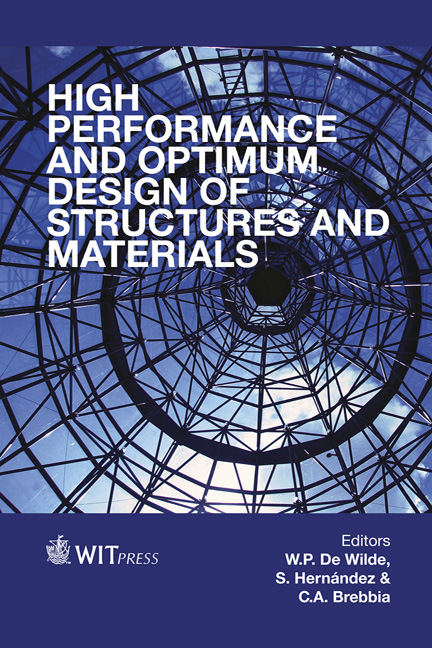Optimal Design Of Through-truss Steel Bridges
Price
Free (open access)
Transaction
Volume
137
Pages
12
Page Range
465 - 476
Published
2014
Size
1,704 kb
Paper DOI
10.2495/HPSM140431
Copyright
WIT Press
Author(s)
C. Maraveas, A. Papagiannakis, K. Miamis & K. Tasiouli
Abstract
Structural optimisation is a topic which gathers the interest of many research teams and engineers. Its purpose is to minimise an objective function, such as the weight of a structure, subjected to certain constraints (e.g. compliance of structural members with code requirements). In this paper, optimal design (in terms of shape and sizing) of through-truss steel bridges is performed. Several cases of simply supported bridges with different spans (40m, 50m and 60m) and varying width, corresponding to one or two traffic lanes, were examined. For the aforementioned bridges, the effect of three deck types (reinforced concrete deck, fiber reinforced polymer deck and steel deck) on the weight of the truss and the total weight was investigated. Least-weight shape and sizing optimal design was executed, with the height of the truss and the cross-section areas of its members constituting the design variables of the problem. The structural analysis and design were conducted in accordance with the specifications of the Eurocodes. The influence of both the height-to-span ratio and the deck type on the weight of the truss, the total weight and the cost is discussed based on the results obtained from the optimisation procedure. Keywords: optimal design, steel bridges, frp deck, concrete deck, steel deck, cost analysis of bridges.
Keywords
optimal design, steel bridges, frp deck, concrete deck, steel deck, cost analysis of bridges.





